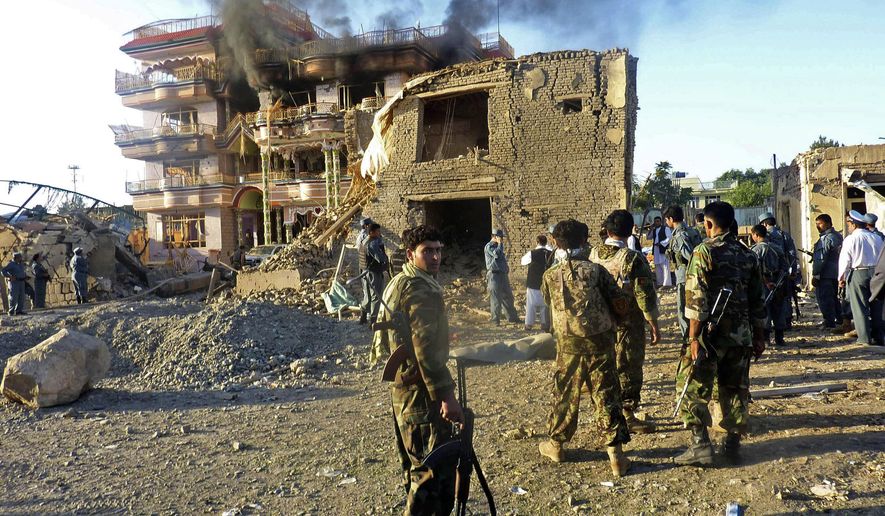American taxpayers funded billions of dollars worth of reconstruction projects in Afghanistan that were destroyed or abandoned during the two decades of fighting in the war-torn country, according to a new watchdog report.
Of the nearly $8 billion in U.S. capital assistance projects in Afghanistan — construction, building purchases and motor vehicles — more than $2 billion was wasted, according to the latest critical report issued Monday by the Special Inspector General for Afghanistan Reconstruction (SIGAR.)
Even when projects were used as intended, only $343 million worth of the assets were still being maintained in good condition, the auditors said.
“SIGAR’s work has repeatedly identified instances of U.S.-funded capital assets going unused, not being used for their intended purposes, deteriorating beyond reasonable wear and tear or being destroyed,” the report stated.
The grim numbers come as the Biden administration faces a looming May 1 deadline on whether to complete a full withdrawal of U.S. troops from the country, after a nearly two-decade deployment. Many fear the U.S.-backed government in Kabul lacks the military and economic base to defeat the radical Taliban Islamist insurgency if international forces pull out.
“Even if the Afghan government controls the pandemic and successfully negotiates a peace agreement with the Taliban — perhaps the best-case scenario for Afghanistan — this will not translate immediately into sustainable licit economic growth, as many enduring barriers to economic growth remain,” the SIGAR auditors wrote.
The Department of Defense, State Department and United States Agency for International Development (USAID) each paid for at least one capital asset that went unused. The Pentagon spent $6.7 million to build a women’s compound at the Afghan National Police training center Jalalabad that was never occupied after the Afghan Ministry of Interior placed a moratorium on training women.
USAID renovated a school in Herat Province that still had so much structural damage and electric hazards that classes had to be held outside for fear the students would be injured, SIGAR found. And the State Department spent more than $7 million to build communications towers to allow cell phone use in several provinces in Afghanistan but underestimated the cost of operating and maintaining them.
“The fact that so many capital assets ended up this way should have been a cause of concern on the part of U.S. agencies funding capital assistance projects in Afghanistan,” the report concludes. “Nevertheless, the agencies continued with a ‘business as usual’ approach with their reconstruction efforts in Afghanistan, resulting in at least $2.4 billion in taxpayer funds being wasted on capital assets.”
Oversight issues regarding the funding in Afghanistan may have even run afoul of U.S. law. The U.S. Foreign Assistance Act of 1961 requires agencies to certify that foreign beneficiaries of more than $1 billion in capital assistance projects are capable of using and maintaining them.
“The most common reason a capital asset was unused, abandoned or not used as intended was that the beneficiary lacked the resources or capabilities to use the asset as intended,” the report stated.
In other cases, the destruction or deterioration of a project made it uninhabitable for while in other cases they were constructed despite a lack of demand on the part of local Afghans.
Torek Farhadi, a former adviser to the Afghan government, told the Associated Press that a “donor knows best” mentality often prevailed that often resulted in little to no consultation on projects with local officials in Kabul.
The House Oversight Committee’s subcommittee on national security plans a March 16 hearing on the SIGAR report’s findings and the state of Afghanistan’s U.S.-funded reconstruction efforts.
“While I believe that targeted humanitarian relief and construction assistance for Afghanistan was and is warranted, this SIGAR report exposes serious gaps in planning and contract execution and provides guidance on how U.S. taxpayer resources must be more wisely and carefully allocated to ensure they do not go to waste,” said Rep. Stephen Lynch, Massachusetts Democrat.
• Mike Glenn can be reached at mglenn@washingtontimes.com.




Please read our comment policy before commenting.